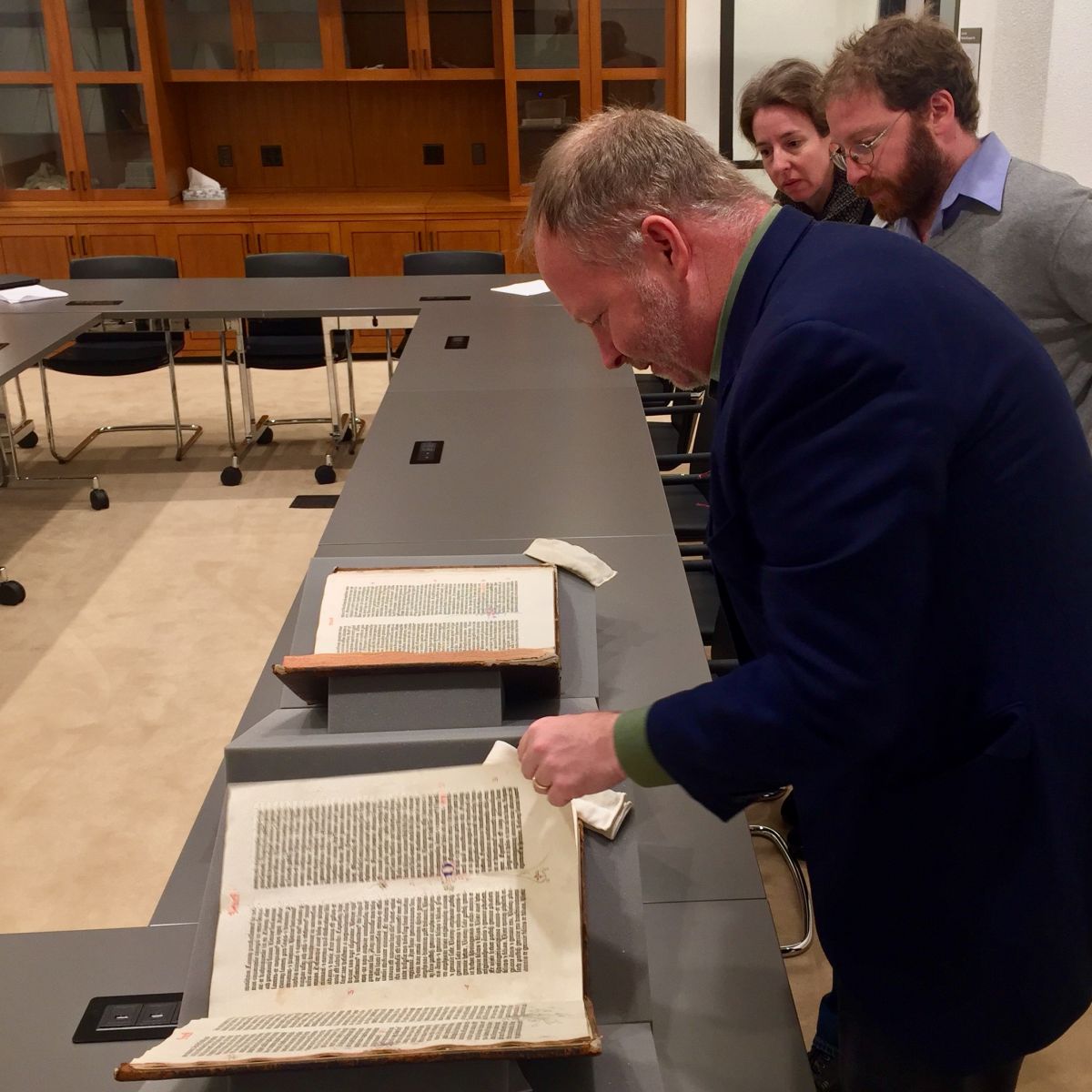Teaching Excellence at Yale
Co-teaching with rare and primary sources benefits student learning.
Bruce Gordon, Titus Street Professor of Ecclesiastical History, and Joel Baden, Professor of Hebrew Bible, intrigued students with luminous primary texts throughout their co-taught course REL 760: Jews, Christians, and Renaissance Bibles. The class was held in the Beinecke Rare Book and Manuscript Library, where students used rare material holdings to consider the relationship between Jewish and Christian theological interpretations.

In collaboration with the Beinecke’s Kathryn James, Curator of Early Modern and Osborn Collections, students discovered and analyzed the material conditions of papyri, Books of Hours from the 15th century, the Gutenberg Bible, and more. “This class could not happen any place else,” says Gordon; “no other place has this depth of resources.”
“We discussed everything from the materiality of the books and manuscripts, to thinking about print culture, translation, and dissemination of learning,” says Gordon. Each class began by looking at primary texts laid out in front of the class; Gordon and Baden then asked students about what they saw and what struck them in terms of material features. “In the contents of the books examined, but just as much in their material form,” says Baden, “the tentative and often contentious interactions across religious and cultural boundaries are present on the page.” By examining primary source documents, students could then make their own observations and connections to secondary texts, as they learned to chart cultural change through a variety of primary sources. “The level of astonishment is unparalleled,” Gordon remarks; “conversation flows.”
With students from Yale College, the Graduate School, and the Divinity School, class activities incorporated multiple perspectives, backgrounds, and skills. For final projects, Gordon and Baden invited students to locate a manuscript or book in the Beinecke and consider how they might curate it. “What would you present?” the instructors asked students; “what would you put alongside it?” Students explored the “relationships and borrowing,” as Gordon said, between Jewish and Christian interpretation, while learning to interpret primary objects themselves. “Being able to work with these remarkable items directly,” says Baden, “allows for a much richer experience of the past.”
Research and resources exploring the impact of primary sources:
Ann Schmiesing, Professor of German and Scandinavian Studies at the University of Colorado Boulder, and Deborah Hollis, Associate Professor of Special Collections and Archives at the University of Colorado Boulder, discuss a successful collaboration between faculty and special collections staff, and share teaching rationale and learning outcomes for using primary texts in the classroom. Read “The Role of Special Collections Departments in Humanities Undergraduate and Graduate Teaching: A Case Study” online via the journal Libraries and the Academy.
Lois Hendrickson, Curator, Wangensteen Historical Library of Biology and Medicine at the University of Minnesota, discusses the use of historical artifacts and texts in a history of medicine class. Read “Teaching with Artifacts and Special Collections” online via the journal Bulletin of the History of Medicine.
Yale University’s Beinecke Rare Book and Manuscript Library offers a variety of resources for teaching with primary texts, including Traveling Scriptorium, a digital teaching kit that offers lesson plans and sample materials for using primary texts, artifacts, and ephemera in class.
Share with us or a colleague:
View or download a PDF version below. Send us your feedback and suggestions. To opt-out/opt-in to this newsletter, please visit Yale’s messaging service website and follow the on-screen instructions (see instructions in the sidebar above).
